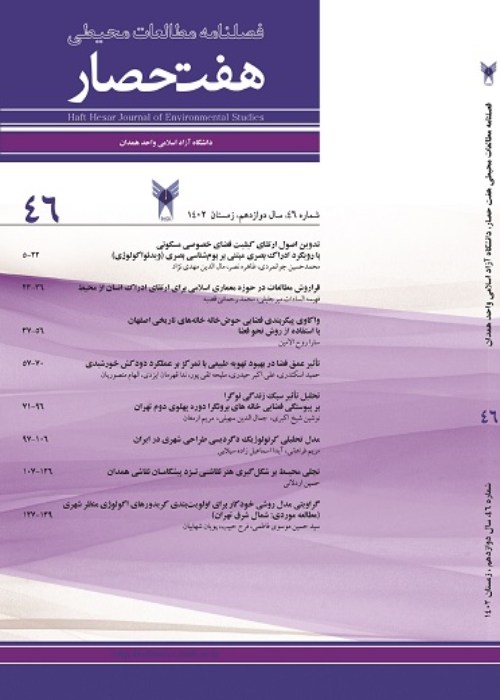Urban neighborhood regeneration; Interpretive structural modeling of the factors affecting connected public spaces
Urban planning has emphasized quicker,lighter,and cheaper methods in recent years. According to urban studies,urban public spaces are valuable factors for urban neighborhood regeneration. Although,the concept of the network (connectivity in public spaces) is not new,and various authors,researchers had applied,adapted it to different areas of urban planning,it would be a new approach for urban neighborhood regeneration. The connected urban public spaces network can be explained in two dimensions: 1. physical,formal,2. formal,functional. As long as strong complementarities have been built by them,those two dimensions not be used independently. In this article,connectivity in public spaces,its significant role in regeneration studied in three physical,functional,and imaginal aspects.This research,proposes to examine a conceptual framework for programming,planning,and designing public spaces in a way that helps to find out solutions for regeneration regarding three aspects that discussed before. Achieving this goal,“interpretive structural modeling” (ISM),and “Delphi” method is used. Interpretive structural modeling is a technique for promoting small groups to develop a graphical illustration concerning complex systems. Developing a structural self-interaction matrix (SSIM) is the first step of modeling based on pairwise comparison of variables by experts,after this,(SSIM) converted into a reachability matrix (RM),its transitivity was checked. Once transitivity embedding completed,a matrix model obtained. Then,the partitioning of the factors,extraction of the structural model called (ISM) is derived. The data collection basis is the review study also interviews with specialists. Physical connectivity,façade unity,integrity,visual connectedness,corridors,and footways linkage,physical proximity,mixed using,main type land use connecting,walkability,movement of people within two spaces,functional supplementing among two spaces,similar sensory among two spaces,and environmental awareness are main factors of the studies.To conclude,the first layer of the neighborhood regeneration are corridors,sidewalks linkage,and investment on urban public spaces or historical buildings. The second layer emphasizes the primary factors of the connected public spaces network,which are urban structural cohesion,urban functional supplementing. The third layer outlines its achievements,sense of belonging,environmental awareness.
- حق عضویت دریافتی صرف حمایت از نشریات عضو و نگهداری، تکمیل و توسعه مگیران میشود.
- پرداخت حق اشتراک و دانلود مقالات اجازه بازنشر آن در سایر رسانههای چاپی و دیجیتال را به کاربر نمیدهد.


